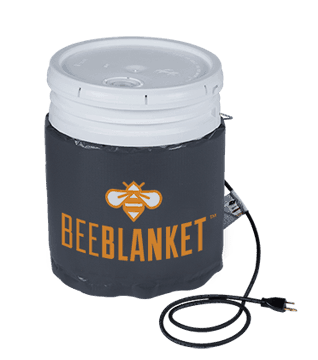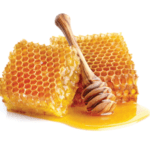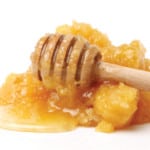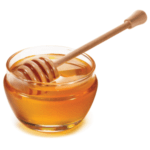Did you know that there are over 94 million commercial beehives globally? Love them or fear them, honey-producing bees are essential to the world’s food supply. Besides providing us with abundant fruit and vegetable pollination, they produce honey as a delicious side benefit.
Global honey production stands at around 1.88 million metric tons. Keeping the supply of this sweet superfood flowing takes planning and the right equipment. Sometimes honey can get too cold to flow smoothly or crystalize and harden. How do commercial beekeepers keep all that honey from getting too thick and crystallizing so they can bottle it?
This article will answer common questions such as “how to decrystallize raw honey?” or “how to soften honey in a plastic container?.” We will show you how to soften honey while keeping its quality.
First, let’s look at honey’s composition, why it’s so good for us, why it crystallizes, and how to decrystallize honey.
The Bee Blanket is the perfect solution for maintaining uniform heat around any size honey container, from 5-gallon buckets, 55-gallon barrels, or multiple containers with a Bee Blanket Bulk Material Warmer. It is specially designed to hold raw honey at around 100°F (37.7°C) like a beehive, so you won’t lose any nutrients.
Honey, The Sweet “Superfood”
People have documented honey’s sweetening and healing powers since 2,100 B.C. References to honey have appeared in writings in Samaria, Babylon, Egypt, and India. Healers have used honey to mend wounds because it has natural antibacterial and antifungal properties. There is plenty of research evidence that honey can inhibit the growth of bacteria and stimulate the immune response for faster wound repair.
Of course, it’s honey’s sweetness that attracts everyone to it. The bulk of honey consists of two easily digestible sugars, fructose, and glucose. Here’s the breakdown of honey’s composition:
- 38.2% – Fructose
- 31% – Glucose
- 17.1% – Water
- 12.9% – Other sugars
- 0.5% – Minerals, vitamins, & enzymes
A tablespoon (21 grams) of raw honey packs around 16 grams of sugar and 64 calories. That’s 76% sugars by weight depending on the honey and source of flower nectar.
There are two commercially available honey products, raw and pasteurized.
Raw honey may be filtered or unfiltered. This delicious liquid can contain 31 vitamins and minerals, 22 amino acids, and almost 30 types of bioactive plant compounds.
Pasteurized honey goes through a heating process of up to 160°F (71.1 °C), killing any yeast. Pasteurization and ultrafiltration create smooth, clear honey that resists crystallization in storage. Unfortunately, it destroys beneficial vitamins, amino acids, and enzymes.
Storing honey can be tricky because it can eventually get hard and crystalize.
Why Does Honey Crystallize?
The scientific reason for honey crystallization is a process called supersaturation. If you’ve ever tried to keep adding sugar to tea until the sugar no longer dissolves, the water or tea was at the saturation point. Supersaturation occurs when a liquid holds more solids than it should.
In honey, the glucose and fructose are near the saturation point. If the water evaporates, the sugars “precipitate” or come out of the solution and begin to crystalize. It won’t harm the honey, and some people enjoy this spreadable version. However, liquid honey is easier to use, kept in bottles or stored in plastic containers.
Raw honey that has higher glucose levels tends to crystalize sooner. Examples are clover, lavender, and dandelion honey. Higher fructose honey tends to crystalize less and comes from blossoms like tupelo, acacia, and sage.
Remember, honey doesn’t spoil. Crystallization only changes the texture, and you can easily decrystallize honey back into a liquid, which we will discuss shortly.
For more information, read our blog, “Why Does Honey Crystalize?”
6 Questions About How to Soften Honey
Due to the high concentration of fructose and glucose, the freezing point of honey is about -40°F (-40°C). Honey is a high-viscosity liquid; even at average room temperatures, it isn’t easy to filter and bottle. For easier handling, it should be gently heated.
Honey lovers have questions about reconstituting hardened honey. Here are six of the most popular questions.
1. Can Hard Honey Be Softened?
Whether “hard” means frozen or crystallized, the answer is “yes” to both. Gently heating it will do the trick. However, you need to know if the honey is raw or pasteurized. How to soften raw honey makes a difference in its quality. If you pasteurize raw honey over 100°F (37.8°C), it will destroy its natural enzymes, antioxidants, and specific vitamins.
2. Is it OK to Microwave Honey?
Microwaving honey is not a suitable heating method. A microwave heats unevenly, boiling some of the honey while leaving other areas relatively cool. The excess heat will destroy the honey’s nutrients and not melt all the crystals as you want.
3. How Do You Fix Crystallized Honey?
Similar questions include, “how to soften honey in a plastic bottle?” “how to decrystallize raw honey?” and “how to soften hard honey?” The answers are the same…
The best way to soften crystallized honey is by heating it gently. Softening honey in a plastic container or a plastic bottle is not a problem. Here are the steps:
- Before you heat, check the plastic container to ensure it’s heat-safe and won’t contaminate the honey.
- Make a hot water bath large enough to submerge the container to just above the level of the honey. Maintain a temperature of 100°F (37.8°C), like a hot tub.
- Submerge the jar or bottle into the water just above the crystallized honey. Loosen or remove the lid to allow for air expansion. Be sure that the jar will not tip over into the water.
- Stir the honey gently until the crystals have melted, taking up to 20 minutes depending on the honey container.
Do you have a commercial quantity of 5 gallons or larger? You’ll need a Bee Blanket. Keep reading to find out more.
Some tips about heating crystallized honey:
- Avoid using a slow cooker unless you plan to babysit it. The lowest temperature setting is about 140°F (60°C), too high for raw honey.
- If you have a large quantity of crystalized honey, remove what you need for a week and reheat it in a clean glass jar. Avoid continuously reheating honey as it will destroy the nutrients and flavor.
- You can use a sous vide cooker but ensure the bag seals properly so it won’t leak.
For more tips, check out our article, “Heating Honey Without Burning It.”
4. How to Soften Solidified Honey in a Honey Tank
Stainless steel honey tanks range in size from 6-gallon up to 125 gallons. If the tank has a water jacket, you can circulate warm water through it to melt the honey. For single-walled tanks, use the Powerblanket Bee Blanket to achieve the desired melting temperature.
5. How Do You Get Honey Back to Liquid?
If your honey jar turns into a giant crystal, getting honey back to liquid is simple. Submerge the container into a 100°F (37.8°C) water bath. Read question #4 above for more details.
6. How Do You Fix Crystallized Honey in Plastic?
Follow the instructions above and gently heat the honey in a warm water bath for small kitchen-sized plastic honey containers.
For larger containers from 5-gallons to 36”x48”x48” bulk material containers, use a Bee Blanket. This heated and insulated blanket maintains temperatures between 90°-110°F (32.2°C to 43.3°C).
Should You Store Honey in a Glass or Plastic Container?
Whether you have fresh or de-crystallized raw honey, you need to store it properly.
Most people will agree that food and beverages generally taste better from glass than from plastic. Glass won’t impart any flavors to the honey as some plastics can. Glass jars tend to keep honey longer before it crystallizes.
Plastic is a good choice if you sell honey at a retail level with a lot of handling and a higher chance of breaking. It’s OK to store honey in plastic if you plan to use it within 6 weeks. To keep it longer, opt for glass containers.
The Bee Blanket Maintains Uniform Temperature and Flow
How to soften crystallized honey in larger containers? Whether you need to soften honey or de-crystalize it, surrounding the container with a constant heat source is the best option.
The Powerblanket Bee Blanket is the perfect solution to keeping your honey stores at the correct temperature and flow for bottling. Standard sizes include 36x48x48 totes, 55-gallon, and 5-gallon honey containers with or without gate valves.
Powerblanket designed the Bee Blanket specifically for the honey industry. The Bee Blanket retains the same temperature as a hive using low-level internal thermostats. It will never overheat raw honey, keeping it at 100°F (37.7°C). To learn more, you can download the Bee Blanket specs here.
Frequently Asked Questions
How do you soften hardened honey?
To soften hardened honey, submerge the container in a warm water bath at around 100°F (37.8°C) until it returns to its liquid state.
What is the best way to decrystallize honey?
The best way to decrystallize honey is by gently heating it in a warm water bath, ensuring the temperature does not exceed 100°F (37.8°C) to preserve its nutrients.
Can I microwave honey to soften it?
While you can microwave honey to soften it, it's not recommended as it can unevenly heat and damage the honey's beneficial properties.
Is honey still good if it gets hard?
Yes, crystallized honey is still good to eat and retains its nutritional value; it just needs gentle warming to return to a liquid state.
The Powerblanket Bee Blanket will maintain the same temperature as a hive, ensuring your honey is always at the perfect temperature.






